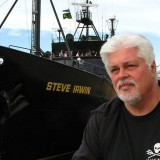Read this story from Peter O’Neil in The Financial Post on Enbridge’s lack of financial liability for a potential oil spill in BC from its proposed Northern Gateway pipelines, due in part to the shell corporation the company has set up to own and operate the project. (July 6, 2012)
OTTAWA – Canadian and especially B.C. taxpayers aren’t adequately protected in the event Enbridge Inc.’s proposed Northern Gateway oilsands pipeline suffers the same kind of catastrophic failure that resulted in a US$765-million — and counting — spill in Michigan two years ago, says a former senior Canadian insurance executive.
Former Insurance Corp. of B.C. chief executive Robyn Allan also argues the 2010 U.S. disaster proves Enbridge is underestimating the potential of human error turning a relatively minor spill into a major one.
She made the assertions in a submission filed last month at the request of the Joint Review Panel (JRP), which was established under the authority of the National Energy Board and the Canadian Environmental Assessment Act. The JRP, which has sent questions to Enbridge as well as to Ms. Allan about the company’s ability to cover costs if there’s a massive spill, is due to release its findings in late 2013.
The panel was established by the Harper government to consider the economic, social and environmental consequences of the $5.5 billion megaproject.
Enbridge assured the JRP earlier this year that if insurance doesn’t cover damages in the event of a spill, the money could be raised from the company’s cash reserves, by borrowing, or even by selling assets.
“Regardless of whether or not insurance covers losses and liabilities of Northern Gateway and/or third parties, Northern Gateway would make good the damages which it has caused,” the company said.
But Ms. Allan pointed in her submission that the corporate entity that will own and operate the Alberta-to-B.C. pipeline — the Northern Gateway Pipelines Limited Partnership — will be distinct from the Calgary-based corporate giant Enbridge Inc., which had $19.4 billion in revenues and just under $1 billion in profits last year.
“The purpose of the structure Enbridge has chosen — a limited partnership — is to limit the exposure investors have for liabilities of the company, not to ‘make good’ on [a] catastrophic spill event,” she told the JRP.
“Enbridge is claiming something it cannot guarantee the limited partnership will deliver.”


